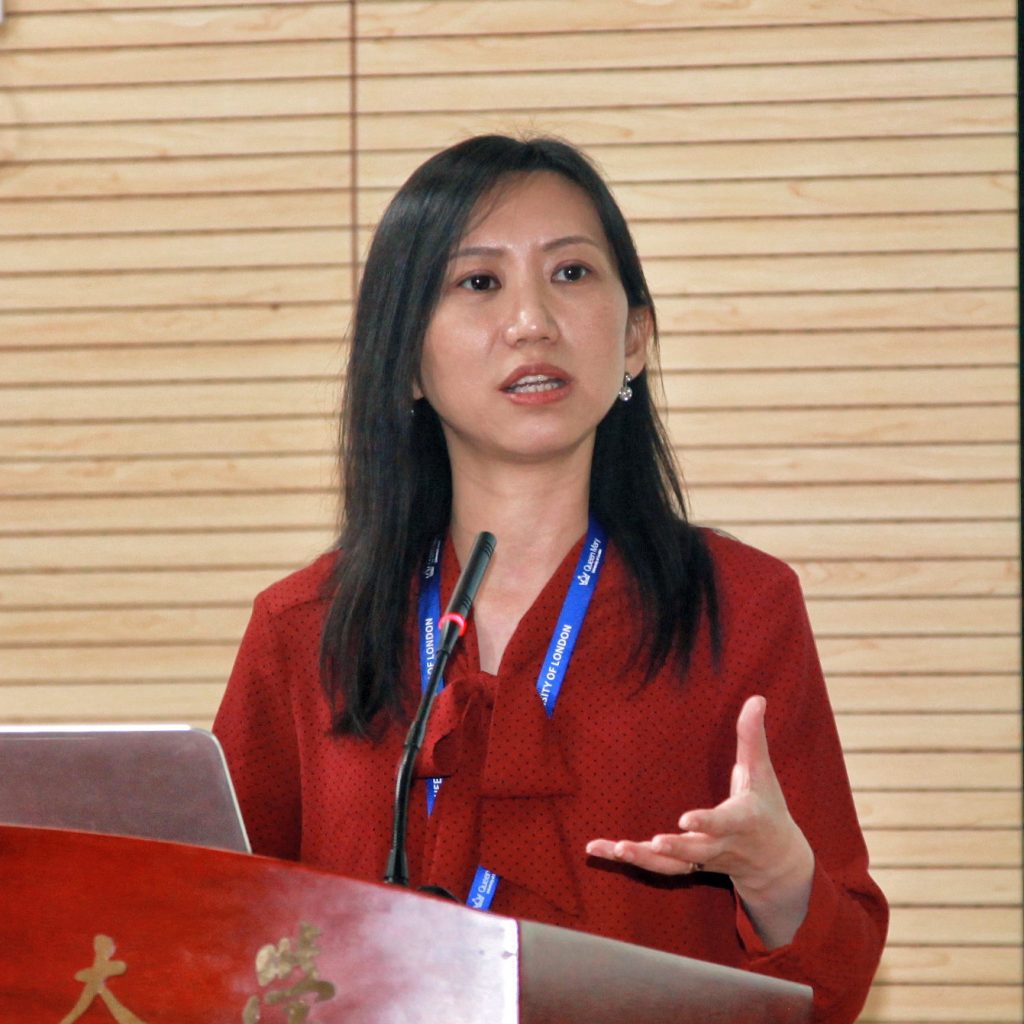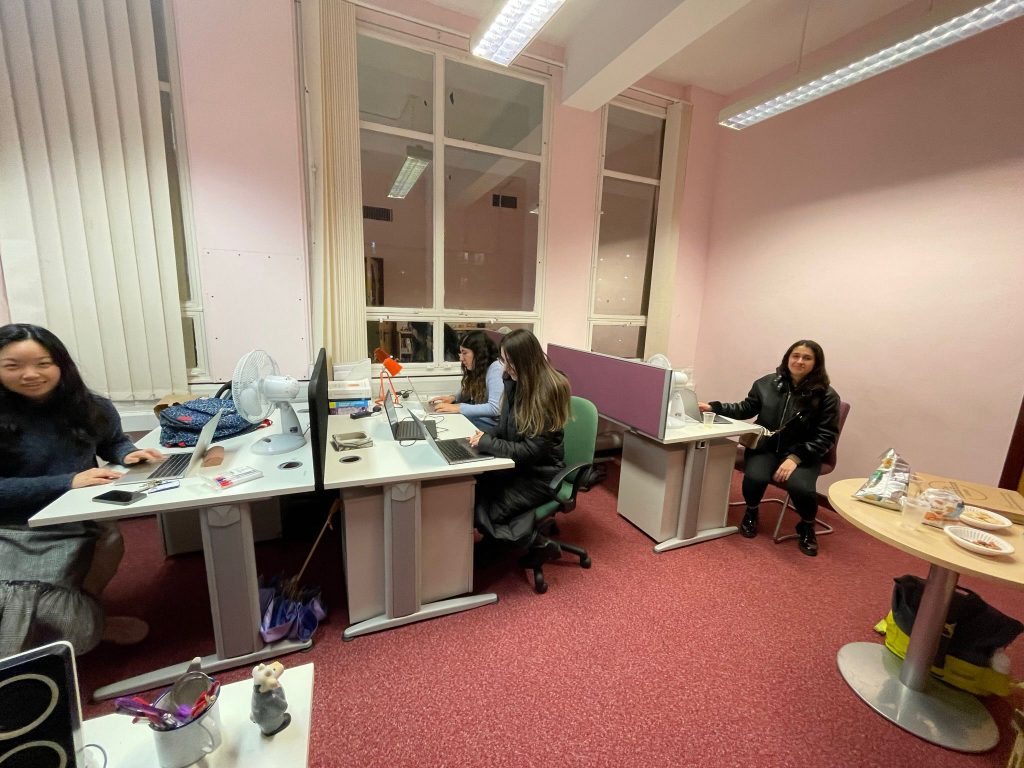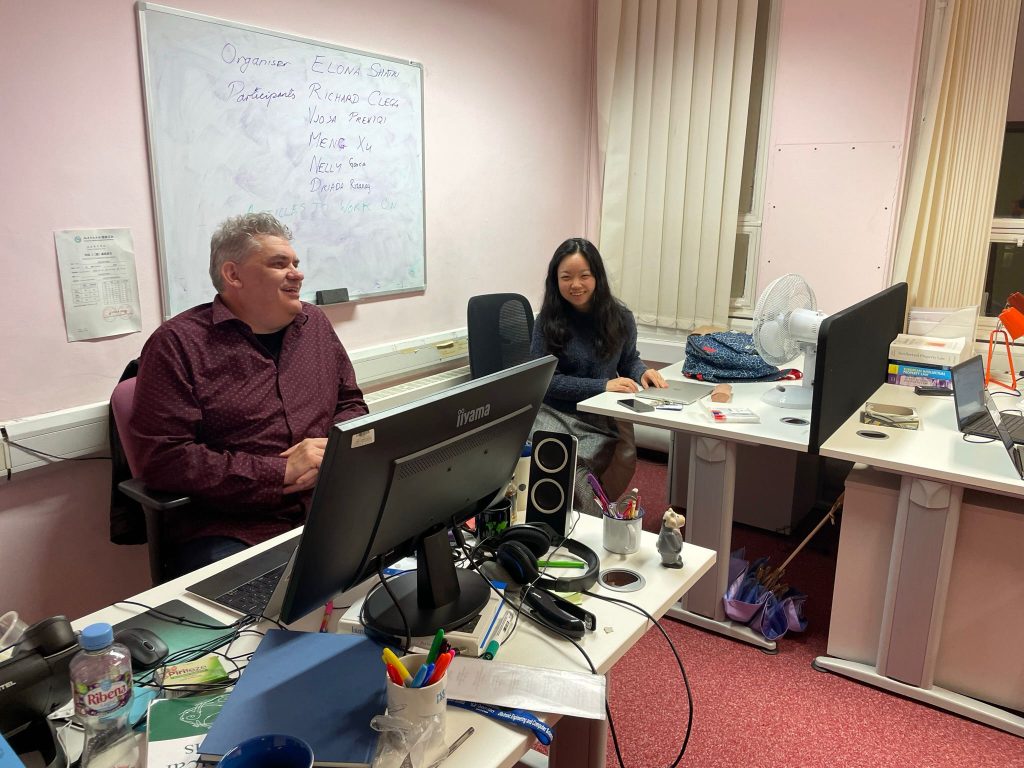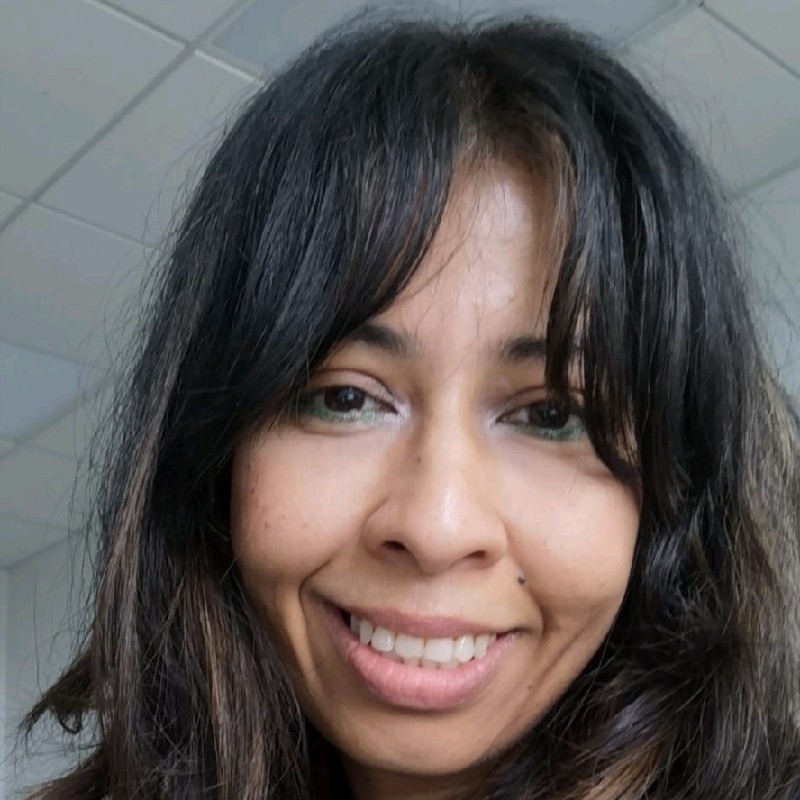In this interview conducted by Elona Shatri, Inês De Almeida Nolasco, a PhD student at QMUL, provides an account of her journey starting academic pursuits while expecting. She elaborates on the challenges of navigating both her research and new motherhood amidst the unprecedented circumstances of a global pandemic, offering a nuanced perspective on the institutional support systems and the broader implications for women in academia.
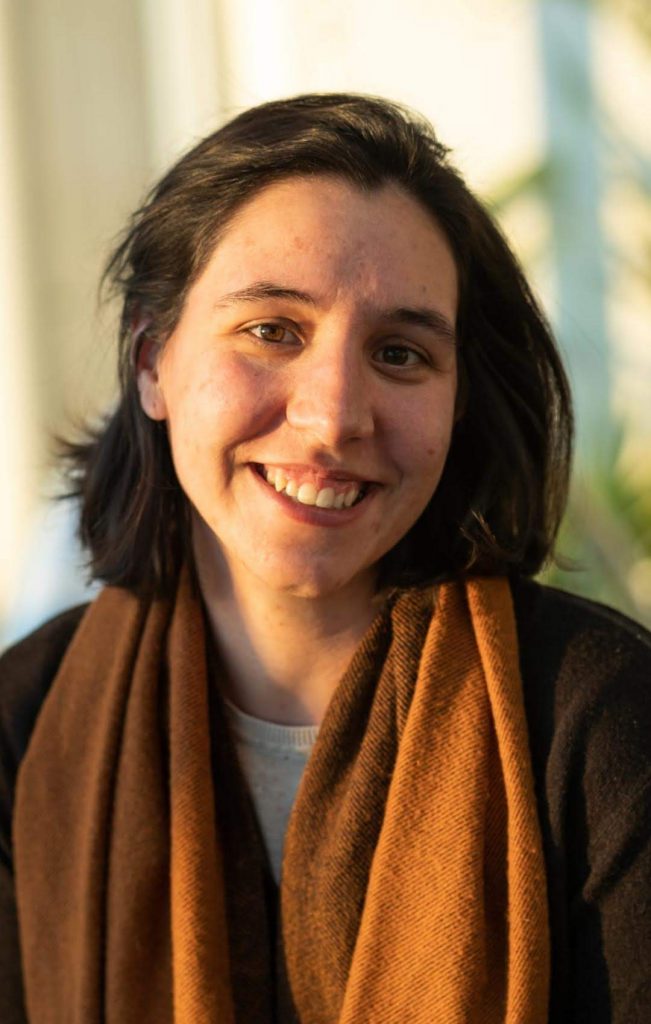
Can you share your personal journey and experiences as a PhD student who had a baby during the pandemic? What were the key challenges you faced?
I started my PhD in February 2020 when I was around five months pregnant, and around the end of March, I started working from home due to the pandemic.
Everyone at that time was struggling with the uncertainty of a novel situation and dealing with something no one had experienced before. It wasn’t very different for me. The main challenge was the ever-evolving protocols from care services as they adapted to the escalating situation. For instance, I never thought I would ask for breastfeeding advice over a video call. There was also a strong feeling of isolation and lack of support from our families, who could not travel to the UK, which was very difficult to accept.
Nonetheless, I also have very warm memories of those times while trying to get behind the first stage of the PhD and planning the birth and life with a newborn rendered lockdown and pandemic to the background.
How did the interruption in your PhD studies impact your academic progress and career aspirations?
I took six months off, and my funding and PhD finish date was extended. Other than the odd conference I may have missed during that time, there wasn’t a significant impact on my academic progress.
However, it was hard restarting work after some time away and a significant shift in priorities. It didn’t help that the pandemic at that time was still not entirely resolved, and my partner and I were still adapting to life with a baby. My mind was definitely not in the right frame to develop work at the level I felt was expected to.
3. Could you elaborate on the support systems or resources that were available to you as a PhD student and new parent within EECS at QMUL? Were there any areas where you felt additional support was needed? Were there any specific institutional or departmental policies that supported you during this time?
“It is sad that having a child while studying for a PhD feels like an immense privilege. “
Regarding financial support, I’m a student funded by the ESPRC, which paid for my 6-month maternity leave, and the Westfield Nursery provides a discount to QMUL staff and students. These are hugely important but still far from enough to support new parents, particularly, moms. For example, more than my monthly stipend goes directly into paying the nursery fees; this means I would probably not have been able to continue studying if I didn’t have a supporting partner.
The scenario gets even more grim because PhD students receive a nontaxable stipend; we are not considered employees, which means that I need to be eligible for most government support programs like the 30-hour free childcare or the tax-free childcare.
It is sad that having a child while studying for a PhD feels like an immense privilege.
In terms of academic accommodations, did you find that the university was flexible and accommodating in adjusting deadlines, workload, or other academic responsibilities due to your circumstances?
Unfortunately, after maternity leave, you are expected to restart working full-time and still fall within the progression deadlines of the PhD (shifted for the duration of maternity leave). This is hugely unrealistic due to the demands of having a new baby, which creates immense and unnecessary pressure on the students. What happens frequently is that, if possible, parents transfer to a part-time working regime, but that means a considerable pay cut.
The job of managing deadlines and adjusting workload is left to the supervision team and student, and although it makes sense to assess each case on an individual level, this means that the process is very subjective to the relationship and understanding one has with one’s supervisors. I’m grateful to my supervisors, who have shown great support and understanding.
What advice or recommendations would you give to other women pursuing a PhD who are considering having children or those who may face similar experiences in their academic journey?
I recommend not disregarding the immense shift in focus after having a baby. It might not happen to everyone, but it was huge and very unexpected for me. Suddenly, the PhD was not the main thing on my mind, making me question if I should continue it.
Also, it helps to plan and take advantage of every opportunity and support available to you. If I could go back, I would have taken more maternity leave; six months later, it was too early to return to work!
Regarding childcare and work-life balance, what strategies or arrangements did you find most helpful in balancing your academic responsibilities and parenting duties?
Nursery is an absolute necessity; other than that, it hugely helps to have close friends or family who can offer some help during work peaks or approaching deadlines.
If not for other factors, the best time to have a kid is during a PhD; the flexibility it provides is super helpful in managing the day-to-day.
From your perspective, how can EECS at QMUL enhance diversity and inclusivity, particularly for women and parents pursuing PhDs? Are there specific initiatives or changes you would recommend?
The mental load and stress of complying with the same schedule of PhD progression as before has been hard to manage. Given the financial consequences of transferring to a part-time working regime, this is not an option for many.
Another point is related to our status as students, which means we are not eligible for most childcare support from the government.
In my experience, these are the main issues which the universities could try to address either by creating different pathways for new parents or increasing the financial support offered.
